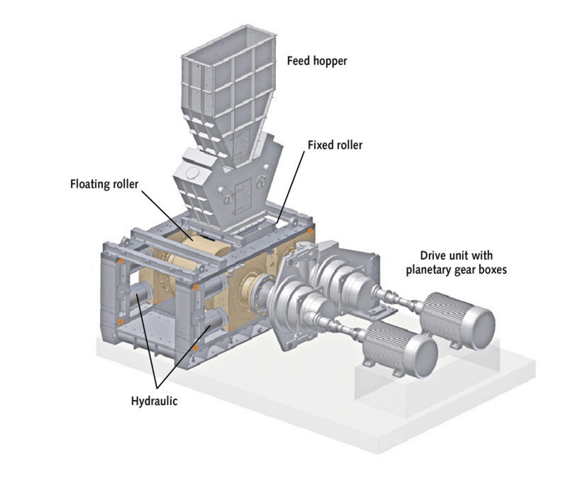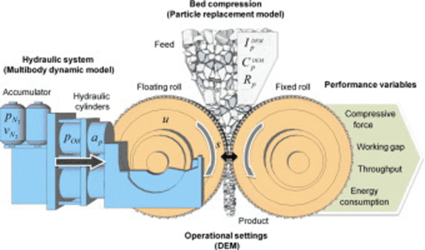High Pressure Grinding Rolls (“HPGR”)
There are over 230 mineral processing plants in Australia, the most common being gold plants. In the US there are almost 2,000 processing plants, excluding coal mines. Worldwide, mineral processing plants consume 5% or more of the world’s electricity, with comminution (crushing & grinding) alone consuming 3%.
The point is that mineral processing is widespread and energy intensive. With ever increasing electricity costs substantial effort is being made to reduce energy consumption. While incremental savings have been made in several areas, it has been many years since there has been a breakthrough development in crushing and grinding.
The last major development has been high pressure grinding rolls (“HPGR”), first used in 1985 in a cement plant. HPGR are used as a form of tertiary crushing, often replacing semi-autogenous grinding (“SAG”) mills. They are much more energy efficient, produce a higher proportion of fines, and leave the coarser fragments fractured and easier – cheaper – to grind. They often feed output to ball mills or vertical grinding mills.
Main HPGR Components
Cutaway showing HPGR in action
With improved design HPGR sets now have a long service life, reduced maintenance and low operating costs. They are now used for all types of mineral processing including, diamonds, magnetite, gold, and all base metals.
Considerable research has been completed on various pre-treatment methods with the intent of reducing the energy consumed in crushing and grinding. The most tested mechanical methods are thermal breakage, microwave heating, high-voltage breakage, ultrasonic breakage and thermal shock. Chemical additives have also been trialed.
While all methods work at a small scale, they have yet to be widely implemented at an industrial scale.
Conclusion
Electricity consumption during crushing and grinding is only likely to increase as lower grade ores are more commonly processed. While incremental improvements in energy efficiency will continue, a break-though method for a substantial reduction in energy consumption is not on the horizon.
Areas where a breakthrough may be made, in addition to comminution, are one or more pre-treatment methods and improved leaching and or flotation.


